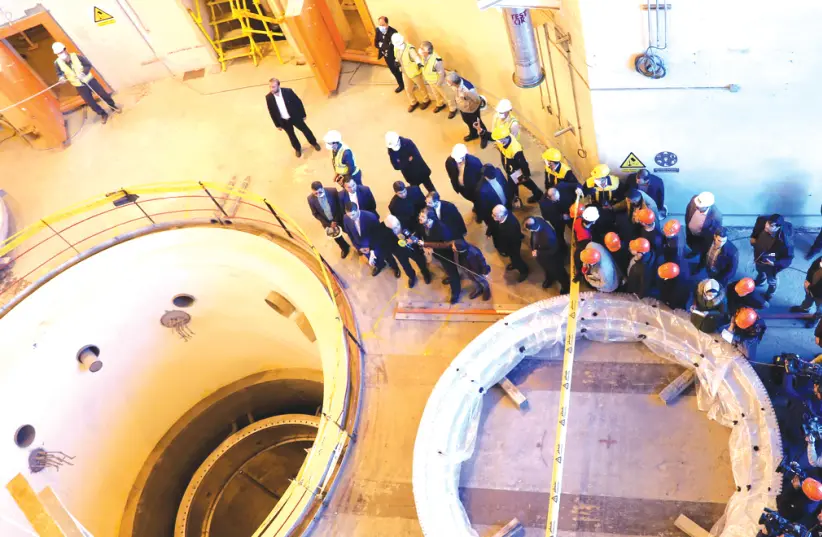If Iran can legally get to the nuclear weapon threshold with no limits in 2030, then the whole game could eventually be up.
The joint US-EU-3 (Britain, France and Germany) statement issued on Thursday night moved both major parties closer to Israel in their positions on Iran in significant ways.
First, the EU-3 backed the US position, which has been the Israeli position, that if it wants to make any progress, the Islamic Republic must reduce its nuclear violations of the 2015 deal.
In contrast, Tehran has demanded that the US first remove sanctions.
The US-EU-3 may yet compromise and eventually agree to come kind of sequence of reciprocal partial moves by both sides – partial reduction of nuclear violations for partial sanctions relief.
France has proposed such a formula in the past and Iranian Foreign Minister Mohammed Javad Zariff hinted at it in an interview with CNN earlier this month.
Second, both parties called out Iran for actions which can only have military nuclear implications, not civilian, such as developing uranium metal and enriching uranium to a 20% level.
Third, the EU-3 came out in support of recent US statements to fill two major holes Israel has continually highlighted in the 2015 deal: the absence of restrictions on Iran’s ballistic missile program and its aggression in the region.
It was also interesting to note that the joint statement appeared to connect potential future progress on the nuclear standoff to the reduction of hostilities by the Iranian-backed Houthis in Yemen and Iranian-backed militias in Iraq – likely responsible for recent missile attacks on US and Kurdish forces.
The strongest language was reserved to warn Iran if it tries to restrict IAEA inspection activities.
All of these moves would seem to be music to Jerusalem’s ears, but it is equally important to note what was not said.
No mention was made of extending the 2025 and 2030 sunset clauses of the nuclear deal.
If Iran can legally get to the nuclear weapon threshold with no limits in 2030, then the whole game could eventually be up.
There was no mention of giving the IAEA “anytime anywhere” inspection powers that it has lacked all along.
It is unclear whether the US will demand rolling back the Islamic Republic’s significant progress with advanced centrifuges since 2015.
Also, this may still only be the opening US-EU-3 position.
If this is the strongest they sound, there may yet be loopholes in the above demands.
For example, what if the US-EU-3 only limit Tehran’s ballistic missile program to where it already is, without pushing it back?
This would keep the US and EU-3 out of range, but Iran would still be able to hit Israel and the Saudis with its existing ballistic missiles.
And if the US-EU-3 still seem committed to only seeking add-ons to the 2015 deal after removing sanctions, will they still have the ability to get any long-term concessions on ballistic missiles and curb Iran’s regional behavior?
Thursday night was not a bad start, but all the questions will be probed in the months ahead and the devil will be in the detail.
 Eurasia Press & News
Eurasia Press & News


